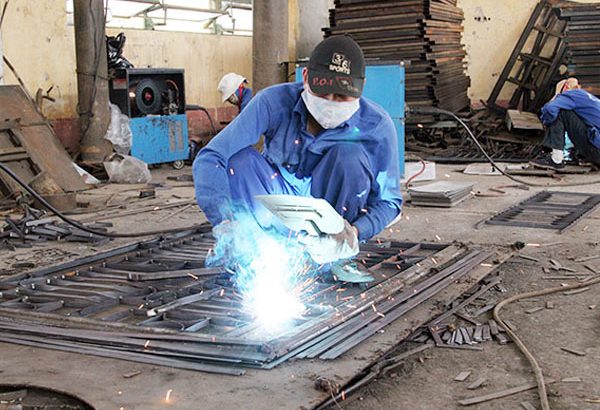Brief Introduction to the Welding Sector at Intermediate Level
On December 28, 2018, the Ministry of Labour, Invalids and Social Affairs (Bo Lao Dong - Thuong Binh va Xa Hoi - BLDTBXH) issued Circular 47/2018/TT-BLDTBXH stipulating the minimum knowledge volume and competency requirements that learners must achieve upon graduation at the intermediate and college levels in the fields of mechanical engineering technology.

Brief introduction to the intermediate-level welding industry - Illustrative image
Pursuant to the regulation on the minimum required knowledge, competency requirements that learners must achieve after graduating from the intermediate level, and college level in the welding industry and profession issued in accordance with Circular 47/2018/TT-BLDTBXH, it is stipulated that intermediate-level welding is a profession where the practitioners perform tasks of joining metal components into a seamless, non-detachable union, by using heat sources, pressure, or both heat and pressure, with or without using supplementary metals, meeting level 4 requirements in the Vietnam National Qualifications Framework.
The welding process often involves localized heating, which introduces stress and deformation. Equipment used in the welding profession can utilize various forms of energy such as electrical energy, light energy, chemical energy, fuel, mechanical energy, kinetic energy, ultrasonic vibrations, etc. The welding process can be manually performed, semi-automatically, or fully automated.
Welds are performed in all positions in space; welding tasks can be carried out in workshops, on-site, or directly on the assembled structures. Machining products through welding have many advantages compared to other machining processes; welding can create joints for all metals and alloys, and can join two different metals, thus the cost of products machined by welding is relatively low, bringing high economic efficiency. Currently, welding equipment is increasingly automated, and welding materials and technology are also more advanced to minimize labor efforts, hence welders currently and in the future will benefit greatly in their work.
Minimum required knowledge: 1,400 hours (equivalent to 50 credits).
Note, upon graduation, learners have the competency to meet the requirements at job positions in the industry and profession including:
- Structural welding;- Technological pipe welding;- Gas welding;- Special welding.
Additionally, the minimum required knowledge and competency requirements that learners must achieve after graduating from the welding industry and profession at the intermediate level can continue to develop at higher levels. Graduates have the ability to self-study and update technological advancements within the industry to enhance their qualifications or pursue higher education in the same industry, related groups, or the same training field.
Details are specified in Circular 47/2018/TT-BLDTBXH, effective from February 10, 2019.
Le Vy
- Number of deputy directors of departments in Vietnam in accordance with Decree 45/2025/ND-CP
- Cases ineligible for pardon in Vietnam in 2025
- Decree 50/2025 amending Decree 151/2017 on the management of public assets in Vietnam
- Circular 07/2025 amending Circular 02/2022 on the Law on Environmental Protection in Vietnam
- Adjustment to the organizational structure of the Ministry of Health of Vietnam: Certain agencies are no longer listed in the organizational structure
- Vietnam aims to welcome 22-23 million international tourists in Vietnam in 2025
-

- Notable new policies of Vietnam effective as of ...
- 16:26, 11/04/2025
-
.Medium.png)
- Notable documents of Vietnam in the previous week ...
- 16:21, 11/04/2025
-
.Medium.png)
- Notable documents of Vietnam in the previous week ...
- 16:11, 02/04/2025
-
.Medium.png)
- Notable new policies of Vietnam to be effective ...
- 16:04, 02/04/2025
-
.Medium.png)
- Notable new policies of Vietnam effective from ...
- 14:51, 21/03/2025
 Article table of contents
Article table of contents
